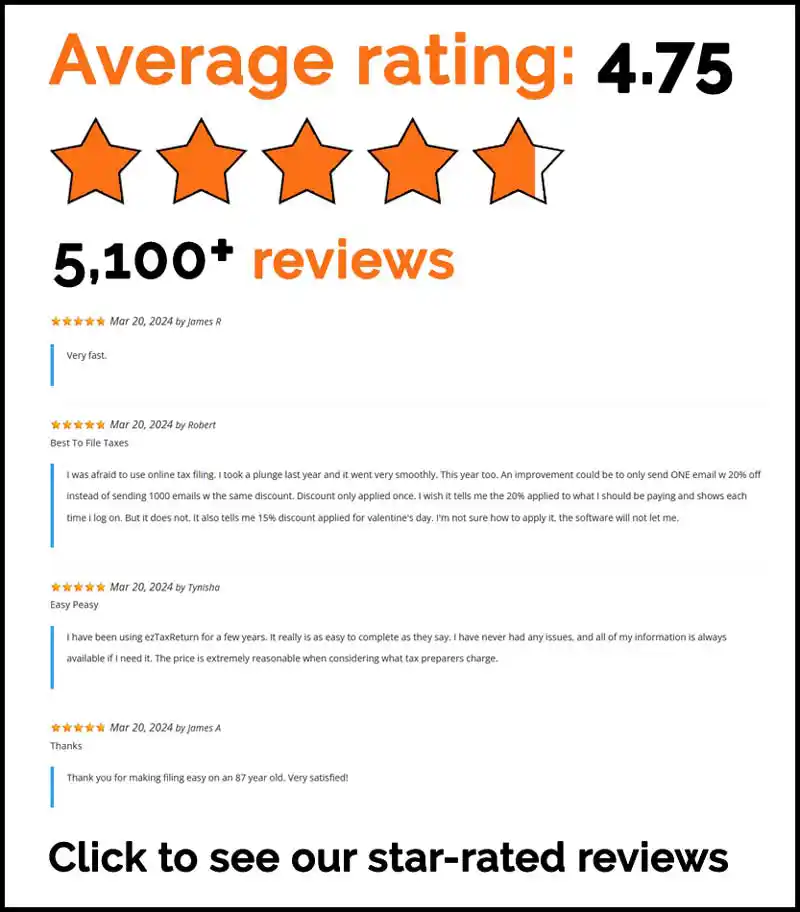The information in this article is up to date for tax year 2025 (returns filed in 2026).
ABLE accounts are savings accounts for people with disabilities that help them save money without losing federal benefits. Created by the 2014 Achieving a Better Life Experience (ABLE) Act, these accounts can be used for expenses like education, housing, and healthcare. This article will explain what ABLE accounts are, who qualifies, and how to set one up.
Key Takeaways
- ABLE accounts are tax-advantaged savings accounts for individuals with disabilities, allowing them to save without losing federal benefits.
- Eligibility typically depends on a disability starting before age 26, with specific contribution limits and tax-free growth for qualified expenses.
- Combining them with trusts maximizes financial security and independence, giving individuals more control over their assets.
What Are ABLE Accounts?
ABLE accounts are designed to ease the financial strains faced by individuals with disabilities. Established under the Achieving a Better Life Experience (ABLE) Act of 2014, these tax-advantaged accounts allow individuals who became disabled before age 26 to save and invest money without jeopardizing their eligibility for most federal benefits. The beauty of an ABLE account lies in its ability to cover a wide range of qualified disability expenses, from education and housing to transportation and assistive technology.
One standout feature is that up to $100,000 in savings does not count against resource limits for Supplemental Security Income (SSI). This means that individuals can save more without losing crucial benefits.
They offer a specific savings and investment option tailored for individuals with disabilities, providing a sense of financial independence that was previously hard to achieve. This unique blend of benefits and security makes ABLE accounts an essential resource for improving the quality of life for many, especially for those with only one able account.
Who Qualifies for an ABLE Account?
Generally, individuals whose disability began before the age of 26 qualify for an ABLE account. However, starting January 1, 2026, the age of eligibility will be expanded to include people who became disabled before age 46.
Additionally, eligible individuals must meet the severity of disability requirement in one of two ways:
- Receiving Supplemental Security Income payments or Social Security Disability Insurance Benefits; OR
- Having signed documentation from a licensed physician stating that the individual’s physical or mental impairment results in marked and severe functional limitations.
Typically, proof of disability isn’t needed to open an ABLE account unless specifically requested. This streamlined process makes it easier for individuals to open their accounts and start benefiting from the financial independence that they provide.
How to Open an ABLE Account
Opening an ABLE account is simple, though it requires some preparation. Begin by gathering essential personal information like the account owner’s name, date of birth, and Social Security number. This data is needed to complete the application.
Applicants can open an ABLE account online via the state plan website or request a paper application through customer service. This flexibility lets individuals choose the method that best suits their needs. Additionally, individuals must decide on the type of account they wish to establish, which may include options for savings, checking, or investments.
The final step is to deposit funds into the account. You can do this by providing bank routing numbers or sending a check. With these steps completed, individuals can start benefiting from their ABLE account and work towards greater financial security.
Comparing Plans
Choosing the right ABLE plan is crucial to optimizing financial benefits. Since each state oversees and establishes its own ABLE programs, there are variations across the nation. Account holders can choose ABLE plans from any state that accepts out-of-state residents, allowing for broader comparison.
Different ABLE plans offer varied investment options, which can significantly affect account growth. Evaluating these options is vital to ensure that the chosen plan aligns with the individual’s financial goals. Additionally, fees associated with ABLE plans can differ widely between states, impacting overall savings and returns.
To make an informed decision, the ABLE National Resource Center provides tools to compare state programs and assess up to three ABLE plans side by side. This countable resource is invaluable for account holders aiming to choose the best plan for their unique needs and achieve a better quality of life through their savings plan.
Contribution Limits and Funding Sources
Knowing contribution limits and funding sources maximizes the benefits of this savings option. Individuals can contribute up to $19,000 to an ABLE account for 2025, which aligns with the IRS annual gift tax exclusion amount. However, if you work, do not participate in an employer sponsored retirement plan, and reside in the continental U.S., you can contribute an additional $15,650. It’s even higher for residents in Alaska; $19,550 and Hawaii; $17,990.
Friends and family can contribute to an ABLE account, simplifying reaching the contribution limit. Employed account owners may make additional contributions based on their annual income or the federal poverty level for a one person household. This additional limit helps those with severe functional limitations to save more effectively. If you receive disability benefits and work part-time, it’s important to know how your disability income may be taxed.
Small, manageable contributions are often more feasible for families facing financial constraints. Starting with smaller amounts and gradually increasing can maintain financial stability while benefiting from an ABLE account. This approach promotes financial independence and security without overwhelming the contributor.
Managing Your ABLE Account
Managing the account effectively is key to reaching long-term financial goals. A checking account for regular expenses simplifies tracking essential costs like housing and food. Automating bill pay ensures qualified expenses are paid on time, reducing missed payments.
Regularly monitoring your ABLE account keeps you informed about spending and ensures compliance with eligibility requirements. Surplus funds in a checking account can be transferred to the savings account for tax-free growth on investments. This practice enhances the account’s growth potential of your savings over time.
Moving funds from a special needs trust to an ABLE account offers greater financial flexibility. Inheritance or settlement funds can be managed effectively by using an ABLE account for smaller amounts and a special needs trust for larger sums. This combination ensures financial security and flexibility.
Tax Advantages of ABLE Accounts
One of the most appealing aspects of ABLE accounts is their tax benefits. These accounts, under Section 529A of the IRS tax code, allow for tax-free growth. Investment income in ABLE accounts is tax-exempt if used for qualifying disability-related expenses.
Contributions to an ABLE account aren’t tax-deductible, but investment earnings grow tax-free if used for qualified disability expenses. This offers a significant advantage, as it helps maintain eligibility for public benefits while providing greater financial security. Withdrawals for non-qualified expenses incur taxes on earnings and a 10% penalty, highlighting the importance of wise fund usage.
The annual contribution limit for ABLE accounts matches the IRS annual gift tax exclusion, set to be $19,000 in 2025. This cap keeps contributions within tax-free thresholds, maximizing account benefits.
Learn more about other tax benefits available to people with disabilities.
What are Qualified Disability Expenses (QDE)?
The funds can be used to cover a wide range of expenses that enhance the account holder’s quality of life. Qualified disability expenses (QDE) include:
- Education
- Housing
- Transportation
- Employment training and support
- Assistive technology and related services
- Healthcare, prevention, and wellness
- Financial management and administrative services
- Legal fees
- Account oversight and monitoring fees
- Funeral and burial expenses
- Basic living expenses
No prior approval is needed to withdraw money from an ABLE account for qualified expenses, making funds easily accessible. However, individuals must track their spending to document funds used for qualified expenses. A checking account linked to your ABLE account can simplify expense monitoring and ensure appropriate fund usage.
This flexibility enables ABLE account owners to manage financial management effectively, covering essential expenses without jeopardizing critical benefits.
How Does an ABLE Account Affect SSI Benefits?
An ABLE account can positively impact Supplemental Security Income (SSI) benefits by allowing individuals to save money without losing eligibility. Specifically, up to $100,000 in an ABLE account is excluded from the SSI resource limit, meaning these funds do not count against the $2,000 asset cap that typically applies. However, if the account balance exceeds $100,000, SSI payments may be suspended until the balance falls below this threshold. More importantly, having funds in an ABLE account does not affect Medicaid eligibility, even if the account balance surpasses $100,000. This feature helps individuals maintain critical benefits while building savings for qualified disability expenses.
What is Medicaid Payback and How Does It Affect ABLE Accounts?
One of the most common concerns for individuals considering an ABLE account is Medicaid payback — and for good reason. Understanding how it works can help you make informed decisions about your long-term financial planning.
What is Medicaid Payback?
Medicaid payback refers to the process where a state may seek reimbursement from a person’s estate after they pass away, to recover the cost of Medicaid benefits they received during their lifetime. This is part of what’s called Medicaid estate recovery.
In simple terms:
If you receive Medicaid and pass away, the state might try to recover money it spent on your behalf — especially for long-term care services.
How Does This Affect ABLE Accounts?
Here’s where ABLE accounts come into play:
- If a person with a disability has an ABLE account and is also receiving Medicaid, any remaining funds in the account at the time of their death may be subject to Medicaid payback.
- The state can file a claim against the funds in the account to recover Medicaid costs dating back to the date the ABLE account was opened — not before.
Not all states actively enforce Medicaid payback on ABLE accounts — policies may vary.
ABLE Accounts vs. Special Needs Trusts: What’s the Difference?
While both ABLE accounts and Special Needs Trusts (SNTs) are designed to help individuals with disabilities manage their finances without jeopardizing eligibility for federal benefits, they have distinct features. ABLE accounts are tax-advantaged savings accounts that allow individuals to save and pay for qualified disability expenses with relatively low administrative costs and greater control over the funds. However, they have contribution limits and require the disability to have begun before a certain age.
Special Needs Trusts, on the other hand, can hold larger sums of money and are managed by a trustee, providing more extensive asset protection and flexibility. Trusts can accept a wider range of funding sources, such as inheritances or settlements, and are often used for long-term financial planning.
Should You Choose One or Both?
Many families find that combining an ABLE account with a Special Needs Trust offers the most flexibility. For example:
- Use an ABLE account for day-to-day expenses, housing, and education
- Use a Special Needs Trust for large gifts, inheritances, or long-term management
Combining both tools can maximize financial security and independence for people with disabilities.
Summary
ABLE accounts are a powerful tool for individuals with disabilities, offering the chance for financial independence and security. From understanding the basics and eligibility criteria to managing the account and maximizing tax advantages, these accounts provide a comprehensive solution for many financial challenges.
By comparing different state plans, understanding contribution limits, and managing funds wisely, ABLE account owners can optimize their savings and improve their quality of life. Additionally, combining these accounts with trusts offers even greater financial flexibility and security. It’s also worth exploring whether you qualify for the Tax Credit for the Elderly or Disabled to boost your tax savings even further.
Ultimately, ABLE accounts empower individuals with disabilities to achieve a better life experience, providing the financial tools necessary to navigate life’s challenges with confidence and independence.
Frequently Asked Questions
Who is eligible for an ABLE account?
To be eligible for an ABLE account, you must have a disability that started before turning 26 and causes significant functional limitations. If that’s you, then you’re all set!
How much can I contribute to an ABLE account annually?
You can contribute up to $19,000 a year to an ABLE account, which is the same as the IRS gift tax limit. That’s a great way to save!
What expenses can ABLE funds be used for?
You can use ABLE funds for things like education, housing, transportation, assistive tech, and even your basic living expenses—pretty handy, right? Just make sure you’re sticking to qualified expenses!
What happens to the funds in an ABLE account after the beneficiary’s death?
When an ABLE account beneficiary dies, outstanding qualified disability expenses, including funeral costs, are paid first. Then Medicaid may claim reimbursement for benefits provided after the account was opened. Remaining funds go to the named beneficiary.
Can I use an ABLE account in conjunction with a special needs trust?
Absolutely, you can use an ABLE account alongside a special needs trust. This combo gives you the best of both worlds for managing funds and enhancing financial security.
Take the stress out of tax season. File with ezTaxReturn — trusted, secure, and designed to make taxes simple for everyone.
The articles and content published on this blog are provided for informational purposes only. The information presented is not intended to be, and should not be taken as, legal, financial, or professional advice. Readers are advised to seek appropriate professional guidance and conduct their own due diligence before making any decisions based on the information provided.




